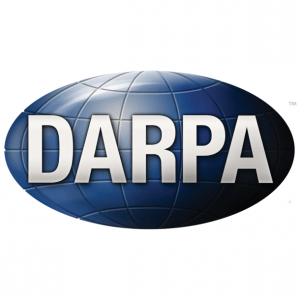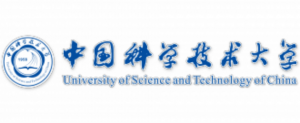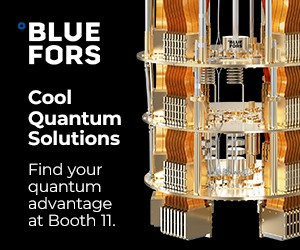Quantum News Briefs September 5: SandboxAQ joins the DOD Skillbridge Program to place military community members in quantum tech careers; DARPA announces new funding for quantum-level infrared (IR) detection at room temperature; China’s QKD quantum satellite half the mass of previous, & MORE

Quantum News Briefs opens today with the announcement that SandboxAQ has joined the DOD Skillbridge Program to place military community members in quantum tech careers followed by DARPA’s new solicitation for solutions to enable quantum-level infrared (IR) detection at room temperature. Next is an update on China’s functional new QDK Satellite terminal with half the mass of a previous system and MORE.
*****
SandboxAQ joins the DOD Skillbridge Program to place military community members in quantum tech careers
 SandboxAQ, an enterprise SaaS company delivering the compound effects of AI and Quantum technology (AQ), today announced it is an authorized partner for the Department of Defense (DoD) Skillbridge program. Quantum Tech News shares the September 2 announcement below.
SandboxAQ, an enterprise SaaS company delivering the compound effects of AI and Quantum technology (AQ), today announced it is an authorized partner for the Department of Defense (DoD) Skillbridge program. Quantum Tech News shares the September 2 announcement below.
The SkillBridge program enables Service members to gain valuable civilian work experience through specific industry training, apprenticeships, or internships during the last 180 days of service. SkillBridge connects Service members with industry partners in real-world job experiences.
Through Skillbridge, SandboxAQ will tap into a growing pool of talented and dedicated workers looking to apply their advanced degrees and military experience in fields such as cryptography, cybersecurity, AI, advanced mathematics, program management, natural and applied sciences and other disciplines to develop AQ solutions that solve some of the world’s toughest challenges.
For Service members SkillBridge provides an invaluable chance to work and learn in civilian career areas. For industry partners, SkillBridge is an opportunity to access and leverage the world’s most highly trained and motivated workforce at no cost. Service members participating in SkillBridge receive their military compensation and benefits, and industry partners provide the training and work experience.
For more information about our exciting career opportunities and employee benefits, please visit our careers page at https://www.sandboxaq.com/careers. To join SandboxAQ via Skillbridge visit https://skillbridge.osd.mil/program-overview.htm and apply today.
*****
DARPA seeks solutions to enable quantum-level infrared detection at room temperature
 The Defense Advanced Research Projects Agency (DARPA) has announced a new program which seeks to enable quantum-level infrared (IR) detection at room temperature. Quantum News Briefs shares the announcement, the Notice ID HR001122S0055 can be read here.
The Defense Advanced Research Projects Agency (DARPA) has announced a new program which seeks to enable quantum-level infrared (IR) detection at room temperature. Quantum News Briefs shares the announcement, the Notice ID HR001122S0055 can be read here.
DARPA’s Optomechanical Thermal Imaging (OpTIm) program aims to develop novel, compact, and room-temperature IR sensors with quantum-level performance – bridging the performance gap between limited capability uncooled thermal detectors and high-performance cryogenically cooled photodetectors.
“If researchers can meet the program’s metrics, we will enable IR detection with orders-of-magnitude improvements in sensitivity, spectral control, and response time over current room-temperature IR devices,” said Mukund Vengalattore, OpTIm program manager in DARPA’s Defense Sciences Office. “Achieving quantum-level sensitivity in room-temperature, compact IR sensors would transform battlefield surveillance, night vision, and terrestrial and space imaging. It would also enable a host of commercial applications including infrared spectroscopy for non-invasive cancer diagnosis, highly accurate and immediate pathogen detection from a person’s breath or in the air, and pre-disease detection of threats to agriculture and foliage health.”
OpTIm is a 60-month program broken into two 30-month phases where teams will aim to validate, characterize, and benchmark this new class of optomechanical IR detectors.
A Proposers Day webcast is scheduled for September 9, 2022.
Read the Broad Agency Announcement solicitation with full program details at SAM.gov
*****
Chinese researchers demonstrate functional QKD satellite terminal with half the mass of a previous system
 Researchers in China have achieved a major milestone in space-to-ground quantum key distribution (QKD) by demonstrating a functional QKD terminal with half the mass of a previous system. Physics World shared the breakthrough September 2 and Quantum News Briefs summarizes here.
Researchers in China have achieved a major milestone in space-to-ground quantum key distribution (QKD) by demonstrating a functional QKD terminal with half the mass of a previous system. Physics World shared the breakthrough September 2 and Quantum News Briefs summarizes here.
After sending the new terminal into space to orbit the Earth aboard the Tiangon-2 space laboratory, scientists at Hefei National Laboratory and the (USTC) conducted a series of 19 experiments between 23 October 2018 and 13 February 2019, successfully transmitting quantum keys between the satellite and four stations on the ground on 15 separate days.
While previous QKD work has been conducted with a different device on the Micius satellite, in the latest study the researchers were able to reduce the terminal’s mass by integrating the QKD payload with other systems such as control electronics, optics, and telescopes. This is a major step forward, but members of the Hefei-USTC team aren’t finished. One challenge they mention in their paper is that they cannot currently run the terminal during the day. This is because scattering of sunlight creates background noise that is five to six orders of magnitude more than what is seen in experiments conducted at night. That said, Jian-Wei Pan, a physicist at USTC and a co-author of a paper on the research in Optica. and his colleagues are working on technologies like wavelength optimization, spectral filtering, and spatial filtering to enable daylight QKD operation.
Following the success of this work, the team will begin constructing a quantum satellite constellation composed of several low-orbit satellites, a medium-to-high orbit satellite, and the ground-fibre QKD networks. “We think our work will contribute to an attractive area of research on how to construct the optimal satellite constellation,” says Pan.
*****
Japanese Researchers develop method for finding the optimal quantum operation sequence for a quantum computer
 The National Institute of Information and Communications Technology, Keio University, Tokyo University of Science, and The University of Tokyo, succeeded for the first time in developing a method for systematically finding the optimal quantum operation sequence for a quantum computer. Science Daily posted the announcement and Quantum News Briefs summarizes here.
The National Institute of Information and Communications Technology, Keio University, Tokyo University of Science, and The University of Tokyo, succeeded for the first time in developing a method for systematically finding the optimal quantum operation sequence for a quantum computer. Science Daily posted the announcement and Quantum News Briefs summarizes here.
In order for a quantum computer to perform a task, we need to write a sequence of quantum operations. Until now, computer operators have written their own quantum operation sequences based on existing methods (recipes). What we have developed this time is a systematic method that applies optimal control theory (GRAPE algorithm) to identify the theoretically optimal sequence from among all conceivable quantum operation sequences.
This method is expected to become a useful tool for medium-scale quantum computers and is expected to contribute to improving the performance of quantum computers and reducing environmental impact in the near future.
*****
Sandra K. Helsel, Ph.D. has been researching and reporting on frontier technologies since 1990. She has her Ph.D. from the University of Arizona.
























